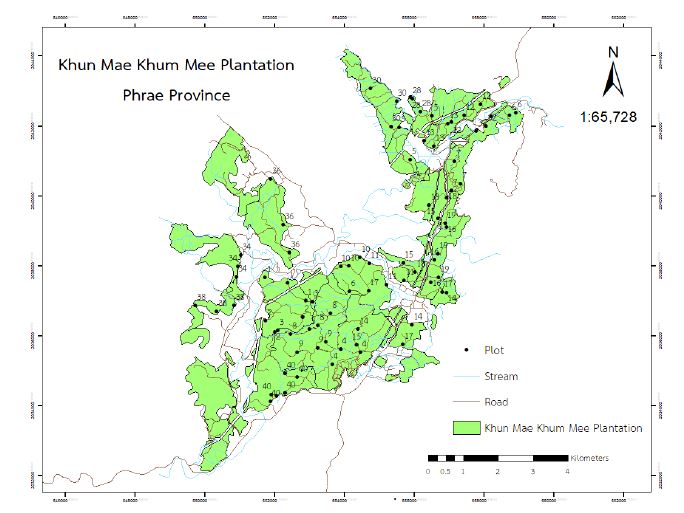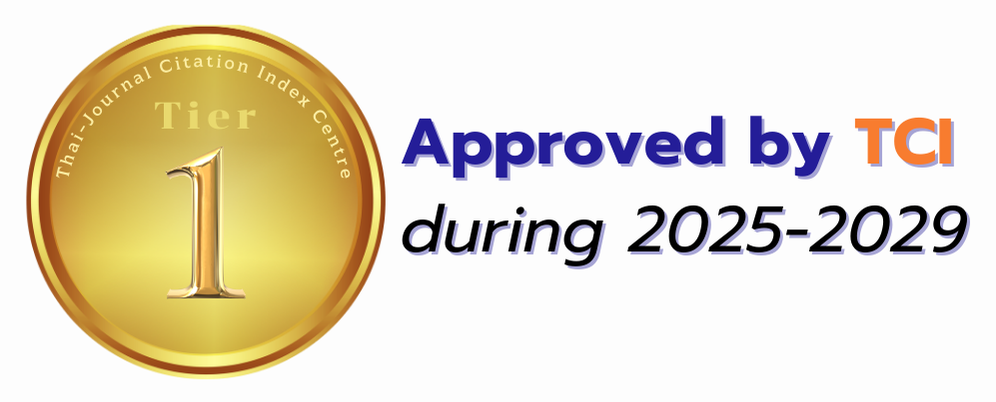Analysis of The Carbon Stock Area of Teak (Tectona grandis Linn.f.) in Khun Mae Khum Mee Plantation, Phrae Province
Keywords:
Geographic information system, Assessment carbon stock, Teak, Khun Mae Khum Mee PlantationAbstract
Study on biomass and carbon sequestration of teak aimed to apply geographic information system (GIS) to assess the carbon sequestration of teak (Tectona grandis Linn.f.) in Khun Mae Khammi plantation, Phrae Province. Sapmpling plots, 20 ? 20 m, were emplogyed in different aged of teak plantation, total 81 plots. All teaks with total height larger than 1.30 m with diameter at breast height (DBH) over than 4.5 cm were measured. Four teak aged classes were divided and potential of carbon storage was also predicted based on Natural Breaks (Jenks) analysis. The results showed that teak biomass and carbon storage depended on aged classes. The total biomass of teak plantation was 32,153.38 tons/ha, equivalent to the total carbon storage amount of 15,112.09 tons carbon/ha. Carbon dioxide adsorption amount was 55,411.00 tons carbon/ha, while, the oxygen emission was 40,298.91 tons of oxygen/ha. Moderate potential level of carbon storage was classified and accounted of 29.67% of the total area. Instead of teak economic benefits, Khun Mae Kham Mee plantation also acts as the important areas for carbon storage resources and help for climate change mitigation. Thus, the economic tree plantation is suitable policy and needs to promote. It is not only provide sustainable resource management but also improve the balance between soceity, economy and environment.
Downloads



.png)





